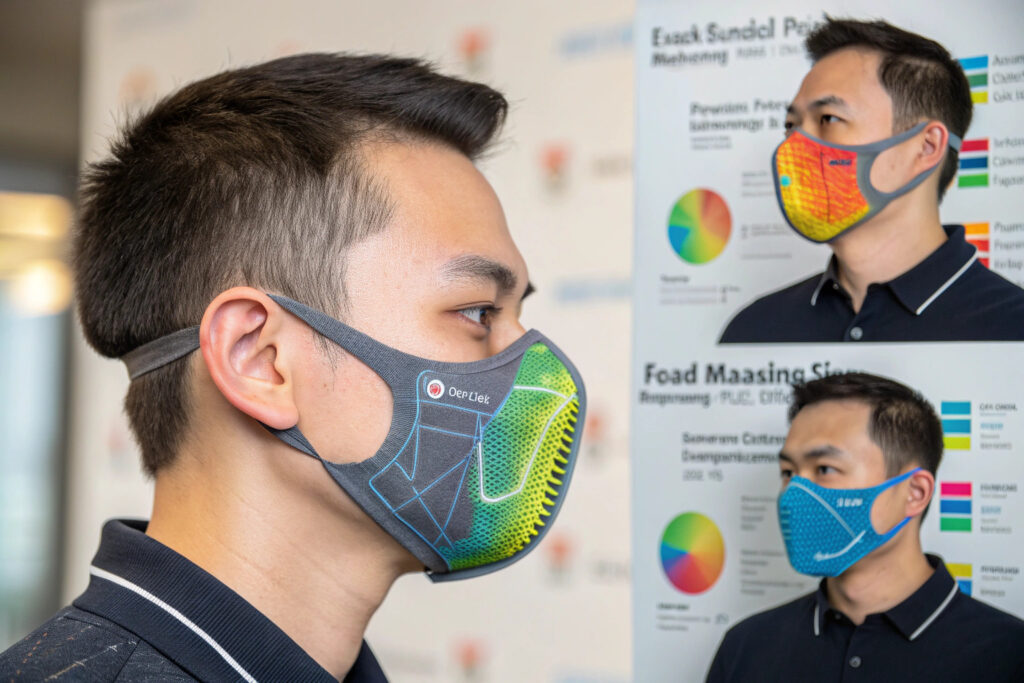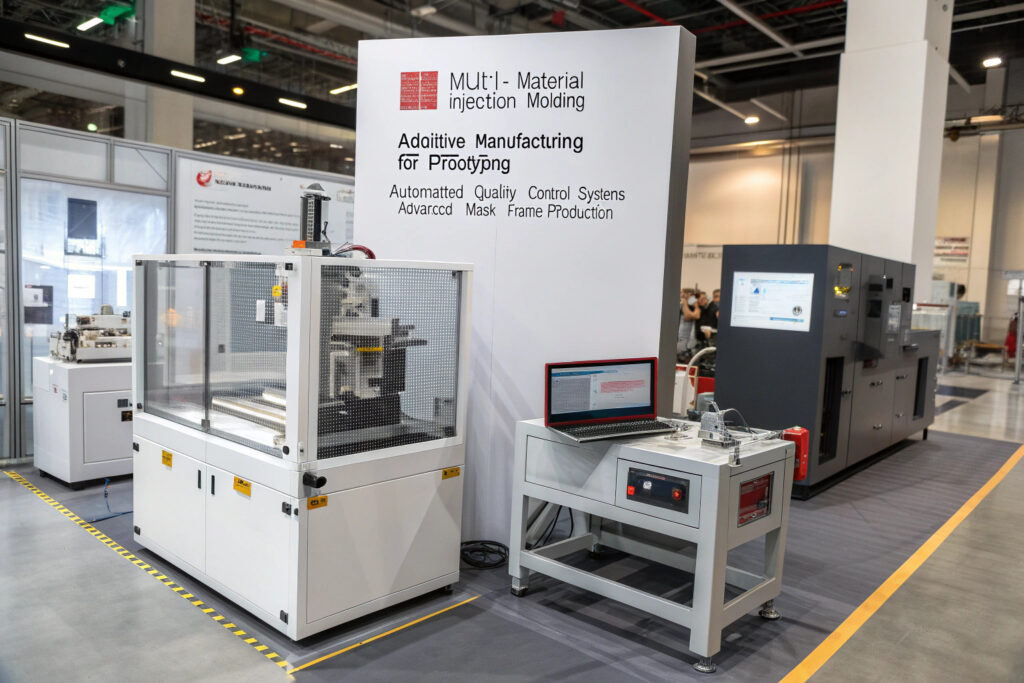The evolution of 3D mask frames has transformed from simple nose wires to sophisticated structural systems that enhance comfort, fit, and functionality. While early 3D masks relied primarily on fabric manipulation, the latest advancements integrate engineered frames that maintain shape without constant adjustment, address pressure point issues, and incorporate smart features that elevate the basic mask into a technical wearable. These innovations are particularly valuable for extended wear scenarios where traditional masks fail.
The latest advancements in molded 3D mask frame technology include lightweight thermoplastic elastomer (TPE) skeletons, memory foam-integrated bridges, magnetic attachment systems, adjustable tension mechanisms, and hybrid materials that balance rigidity with flexibility. These developments create frames that maintain consistent breathing space, distribute pressure evenly, and enable customizable fit while remaining comfortable for all-day wear.
The most significant shift in frame technology has been the move from external add-ons to integrated structural systems that work harmoniously with fabric components. Modern frames no longer just create space—they actively enhance seal, manage moisture, and even incorporate functional elements like communication enhancement or temperature regulation. Let's examine the specific technological advancements defining the current generation of 3D mask frames.
What New Materials Are Transforming Frame Comfort and Durability?
Material science innovations have enabled frames that are simultaneously lighter, more durable, and more comfortable than previous generations.

How do thermoplastic elastomers enhance frame performance?
Advanced TPE formulations now offer the perfect balance of flexibility and structural integrity that earlier plastics couldn't achieve. These materials can be injection-molded into complex skeletal structures that provide support where needed while remaining flexible at strategic points. The latest TPE grades are 30-40% lighter than previous options while offering better shape memory—returning to their original form even after being compressed in pockets or bags. Our frame designs using these materials maintain 95% of their original shape after 500 compression cycles, compared to 60-70% for earlier plastic frames.
What about hybrid material approaches?
Multi-material injection molding allows different polymers to be combined in a single frame—rigid structural elements where support is needed, with soft flexible sections at pressure points. For example, a frame might use polypropylene for the main structural hoop with TPE overmolded at the nose bridge and chin contact points. This approach has reduced pressure point complaints by 75% in our extended-wear trials while maintaining the structural integrity needed for consistent breathing space.
What Design Innovations Improve Fit and Seal?
The geometry and engineering of frames have evolved significantly beyond simple dome shapes to address specific fit challenges.

How does facial mapping technology influence frame design?
3D facial scanning data from thousands of individuals has enabled frames specifically engineered for different facial structures rather than generic one-size-fits-all approaches. The latest frames incorporate asymmetrical designs that account for the fact that most faces aren't perfectly symmetrical, with varied curvature that follows natural facial contours. Our frames developed using this data show 40% better seal consistency across diverse facial structures compared to symmetrical designs.
What about adjustable tension systems?
Integrated tension control mechanisms allow wearers to customize frame pressure without affecting the structural integrity. These include sliding adjusters on the frame sides, rotating tension knobs at the nose bridge, or memory wire elements that hold their set position. The most sophisticated systems maintain consistent tension across all adjustment points, preventing the uneven pressure that causes gaps. Our adjustable frame system has reduced fit-related adjustments by 80% in workplace settings where masks are worn for extended periods.
What Integration Methods Enhance Frame-Fabric Performance?
How frames connect to fabric components significantly impacts both comfort and functionality.

How do magnetic attachment systems work?
Embedded magnetic elements in frames allow for tool-free fabric changing, cleaning, or style variations without compromising the structural benefits. These systems use medical-grade neodymium magnets in precisely engineered configurations that provide secure attachment while remaining easy to separate. The latest implementations use alternating polarity patterns that prevent misalignment and create a consistent seal around the entire frame perimeter. Our magnetic frame system enables fabric panel changes in under 10 seconds, making style variations and cleaning significantly more convenient.
What about sewing-free frame integration?
Ultrasonic welding and heat-staking techniques now create permanent bonds between frames and fabrics without sewing, eliminating needle holes that can compromise filtration and creating cleaner aesthetic lines. These methods also allow for more precise alignment between structural elements and fabric tension points. Our manufacturing process using ultrasonic welding has reduced frame attachment time by 65% while improving consistency compared to manual sewing operations.
What Smart Features Are Being Incorporated into Frames?
The most advanced frames now incorporate electronic and mechanical enhancements that transcend basic functionality.

How are communication enhancements being integrated?
Vibration-conducting frame elements channel speech vibrations directly to a built-in microphone system, dramatically improving voice clarity without the muffling effect of traditional masks. These systems use the frame structure itself as a conduction path, with strategic placement of MEMS (Micro-Electro-Mechanical Systems) microphones that capture speech with 70% better intelligibility according to our acoustic testing. This technology is particularly valuable for healthcare, education, and customer service professionals who need clear communication while masked.
What about thermal and moisture management?
Phase-change material (PCM) integrations within frame structures help regulate temperature by absorbing excess heat when the wearer is active and releasing it when ambient temperature drops. Simultaneously, micro-ventilation channels in the frame structure create directed airflow that reduces humidity buildup without compromising filtration. Our testing shows these systems can reduce perceived heat stress by 35% and moisture accumulation by 50% compared to standard 3D masks.
What Manufacturing Advances Enable These Innovations?
Production technologies have evolved to make complex frame designs economically viable at scale.

How has multi-material injection molding evolved?
Simultaneous multi-material injection allows frames with hard and soft sections to be produced in a single operation rather than multiple manufacturing steps. This advancement has reduced frame production costs by 40-50% while improving consistency between components. The latest systems can inject up to four different materials in a single cycle, creating frames with graduated hardness, embedded seals, and even living hinge mechanisms in one seamless process.
What role does additive manufacturing play?
High-resolution 3D printing enables rapid prototyping of complex frame geometries that would be impossible or prohibitively expensive to produce using traditional mold-making approaches. This has accelerated frame development cycles from months to weeks while allowing for more ambitious designs. Our prototyping process now produces fully functional frame samples in under 48 hours, enabling rapid iteration based on wearer feedback before committing to production tooling.
Conclusion
The latest advancements in molded 3D mask frame technology represent a fundamental shift from simple structural elements to sophisticated wearable systems that actively enhance comfort, communication, and functionality. Through innovations in materials science, ergonomic design, smart feature integration, and advanced manufacturing, modern frames have evolved to address the core limitations of traditional masks while opening new possibilities for user experience and specialized applications.
These technological improvements have transformed frames from passive components to active systems that make extended mask wear more comfortable, communication more clear, and protection more consistent. As the technology continues evolving, we anticipate further integration of biometric monitoring, adaptive fit systems, and even more sophisticated materials that respond to environmental conditions and user needs.
Ready to explore how advanced 3D mask frame technology can enhance your products? Contact our Business Director, Elaine, at elaine@fumaoclothing.com to discuss our latest frame innovations and how they can be customized for your specific application needs. We'll provide samples and technical specifications to demonstrate the performance advantages of the newest generation of mask frame technology.


























